To Know the Difference Between Trade Discount and Cash Discount we have to know the meaning of the both with an example:
1. Trade Discount:
Trade Discount means the amount of cut in the list/dealer price of goods which is granted by the seller to the buyer at the time of the deal. It is not shown in the account, Because It is granted before actual sale arises. So, Here are no journal entries for the Trade Discount.
Example of the TD:
Mr Ram dealing with his distributor to set the rate of a new product launch by his company.
The actual Dealer Price of the New Product set by the company is Rs. 1,200/-
But Dealer negotiate to reduce the price to Rs 1,150/- per piece
Mr Ram also negotiate to Increase the price to Rs 1,180/- per piece
after discussion, they set the price of the product Rs 1,160/- per piece
Trade Discount = Actual price – Negotiated Price
1200 – 1160 = 40/-
Advertisement-X
So, TD is Rs 40/- per piece
2. Cash Discount:
Cash Discount means the amount cut from the total amount of the payment receivable from the creditor or cut from the total amount payable to debtors. It is granted by the receiver to get an earlier payment of the outstanding amount. It has shown in the books of account Because it is granted after the actual sale is done.
Example of the CD:
Mr Sham has an amount receivable from Mr Ram for Rs 15,000/-.according to the payment cycle Mr Ram will pay the amount after one month as agreed at the time of sale.
But Mr Sham offers to Mr Ram, that he will allow him to discount of 5% on the total amount due if he will pay him within 7 days after the time of sale.
So, the amount of Cash discount is Rs 750/- (15000*5%).
3. Chart of Difference Between Trade Discount and Cash Discount:
| BASIS FOR COMPARISON | TRADE DISCOUNT | CASH DISCOUNT |
| Meaning | Trade Discount means the reduction in the list/dealer price of goods at the time of dealing with a buyer of goods | Cash Discount means the reduction in the amount of the Payment receivable from the creditor or payable to debtors |
| Benefit | Received order in Bulk | Received payment earlier |
| Time of Discount | At the time of dealing or sale | At the time of payment |
| Universal to all customer | Yes (if deal prompted on store etc.)Or
No (if dealing by company separately with a single distributor) |
No |
| Record in Books | Only recorded on Invoice, not in financial Books | Yes recorded in Financial books |
| Taxes | No need to pay taxes on trade discount | Yes because it will provide after-sale |
| Vary with | The number of goods purchased in the given time | Payment made in a given time |
Download the chart: –
If you want to download the chart please download the following image and PDF file:-
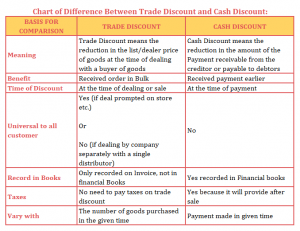

4. Journal Entry of the TD & CD in Single Transaction:
Mr A want to purchase goods from Mr B,
So, Mr B offers a 10% discount to Mr A on the Dealer/list price Rs 500/- Per piece, if he ordered goods minimum 100 pcs quantity.
Further, Mr B also offers a discount of Rs. 2% to Mr A if he will make payment within one week.
on 05/02/2018. Mr A avails both the offer and makes payment immediately.
Advertisement-X
Solution :
In this type of transaction, we have to calculate the trade discount first and on the balance amount calculate the cash discount as the following:
1st Step -> Total Purchase price = 500*100 = 50,000/-
2nd Step -> Trade Discount = 50000*10/100 = 5,000/-
3rd Step -> Net Purchase Price = 50000-5000 = 45,000/-
4th Step -> Cash Discount Availed = 45000*2/100 = 900/-
5th Step -> Net Payment Due = 45000-900 = 44,100/-
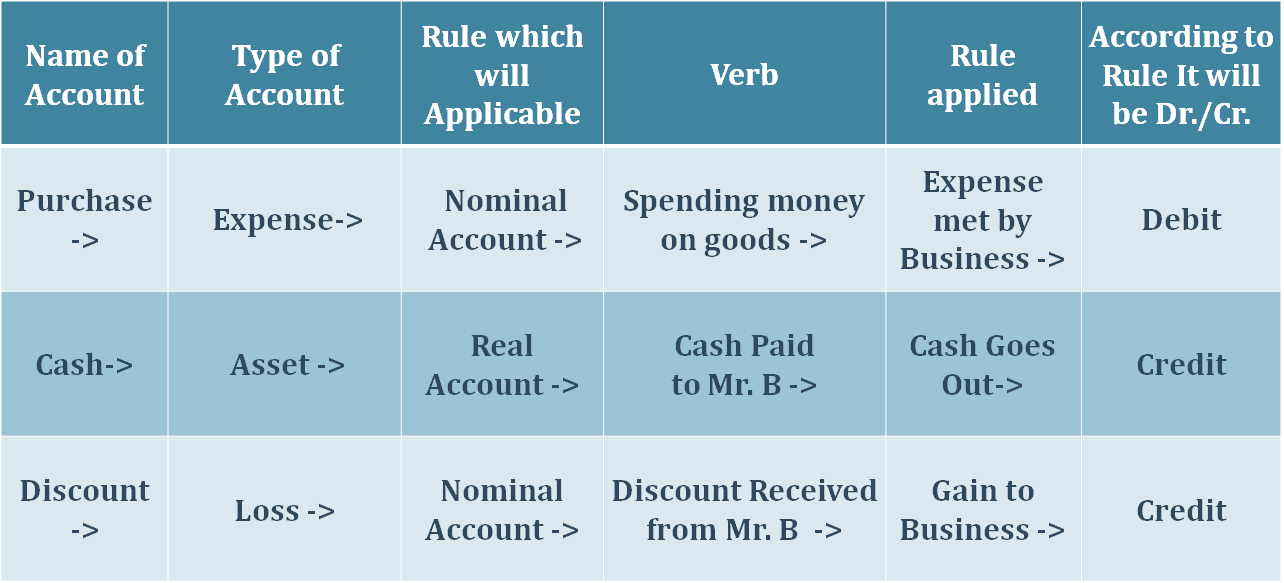
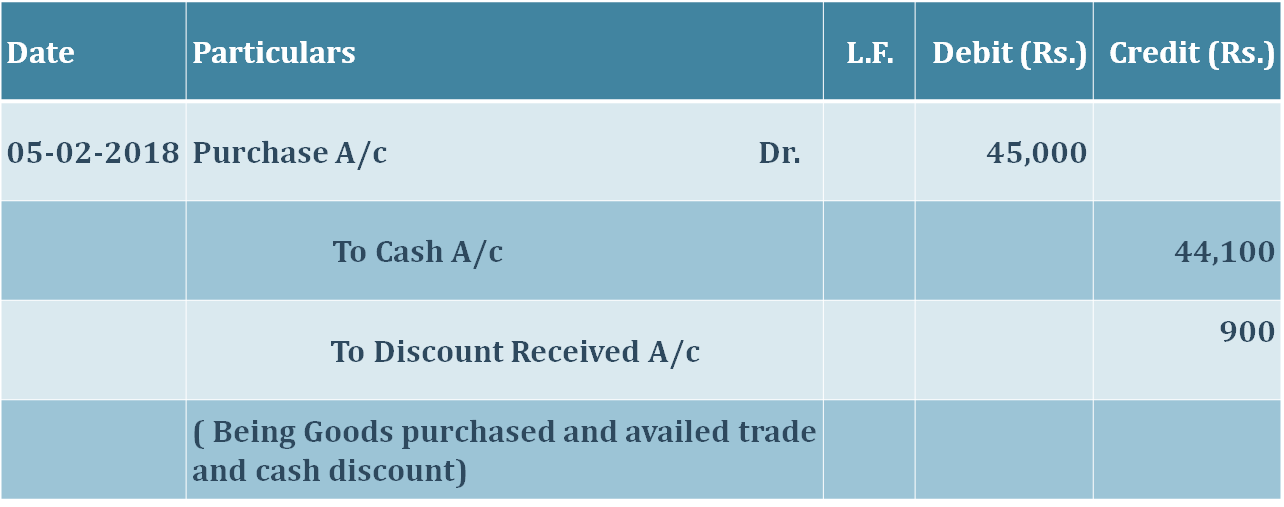

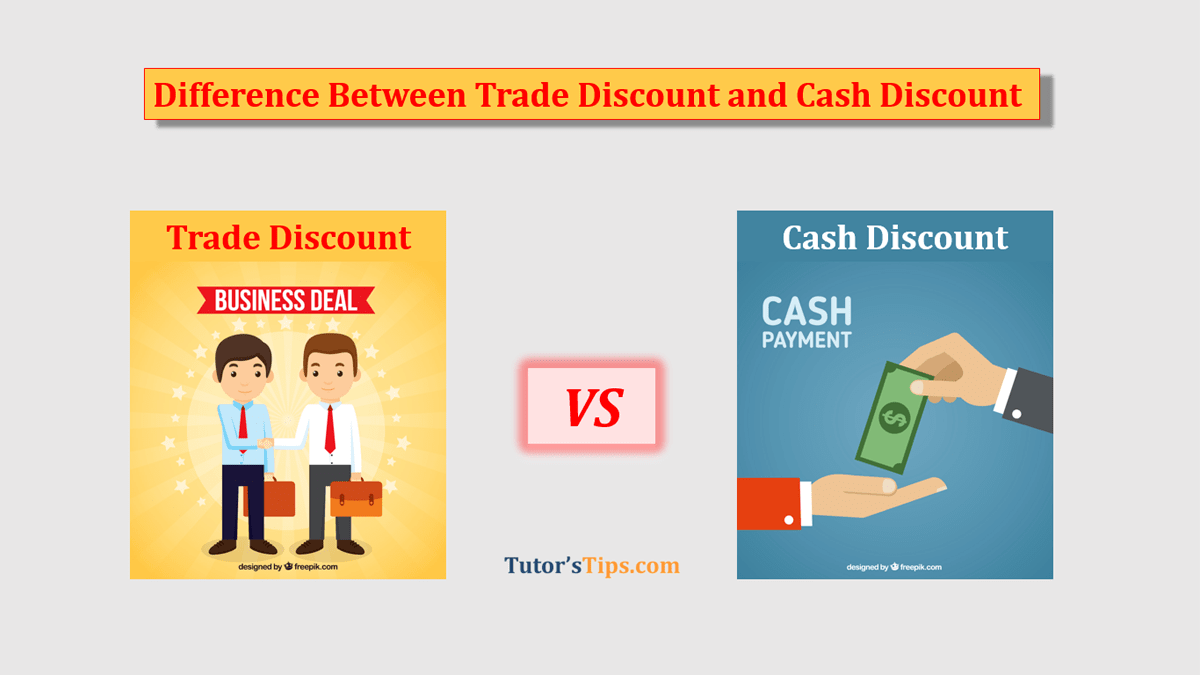

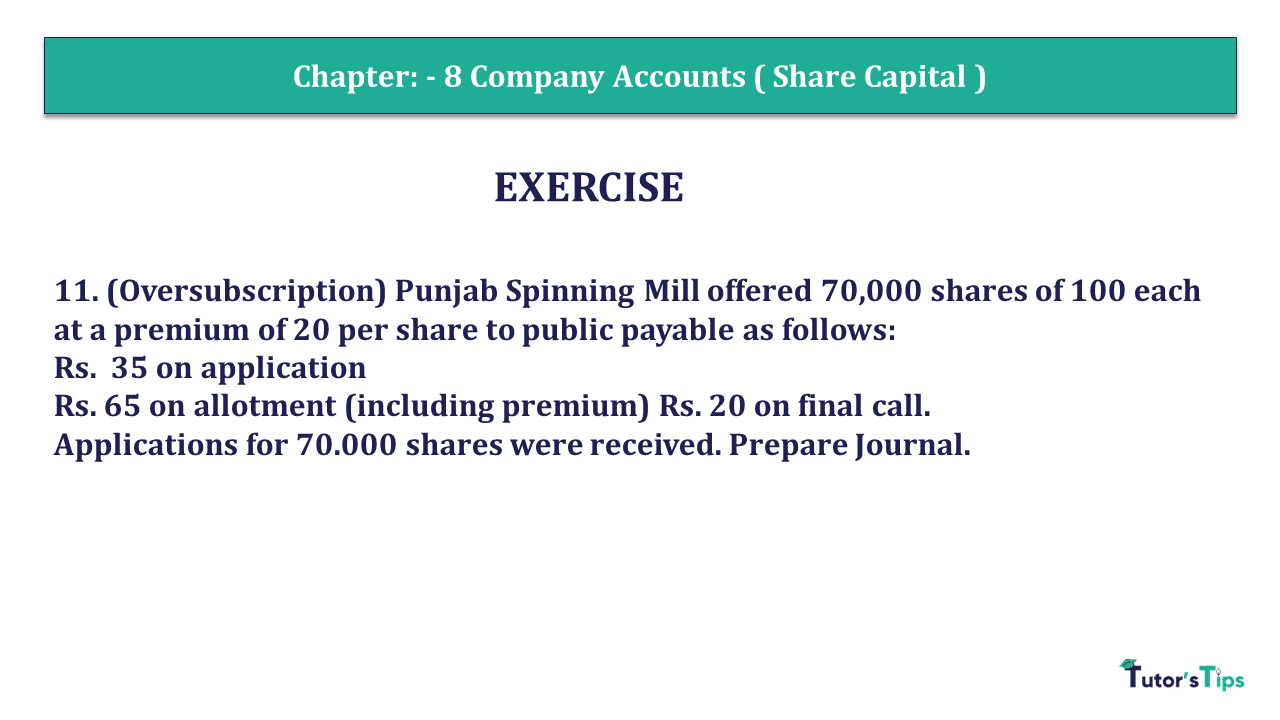



Leave a Reply